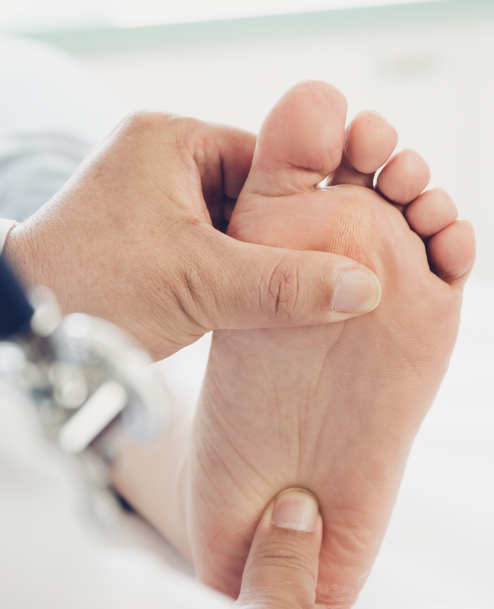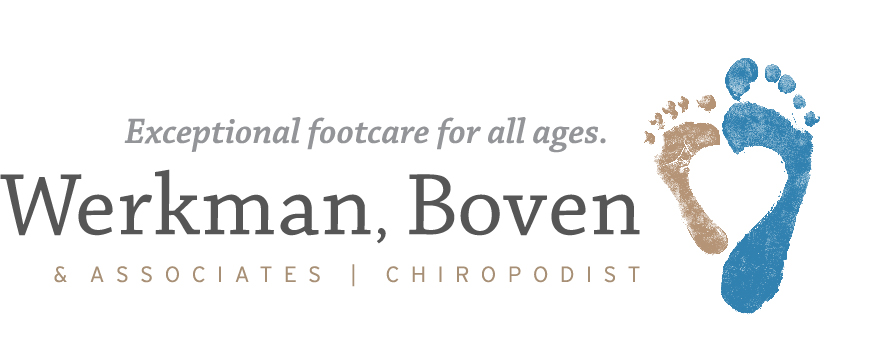Foot Related Treatments
Diabetic Footcare
di•a•be•tes
Any of several metabolic disorders marked by excessive discharge of urine and persistent thirst, especially one of the two types of diabetes mellitus.
How does it affect my feet?
People with diabetes need to pay proper attention to their feet as problems may occur due to either circulation or nerve changes. Here are some foot complications that people with diabetes may encounter.
- Callus: Thickened skin over an area of the foot, where excessive pressure and friction exist due to abnormal biomechanics. If left untreated, these lesions may bleed under the skin, causing tissue breakdown and possible infection.
- Corns: Unlike a callus, corns are an excessive skin buildup in a localized area, usually with a hard central core.
- Ingrown Toenails: Occurs when a spike from the side of the nail starts to grow into the surrounding skin. This spike usually results from improper nail cutting or tight footwear.
- Ulcers: An open wound due to circulation problems, lack of sensation, or pressure.

What does a Chiropodist do?
Treatments for the various complications include:
- Simple debridement (trimming down) of corns or calluses
- Reshaping ingrown toenails or a surgery procedure
- Pressure-relieving padding, insoles or orthotics
- Evaluation, debridement, and appropriate dressings for ulcers. Learn more about foot ulcers and wounds, healing diabetic foot ulcers with weight distribution and total contact casting.
Any of the above conditions, if left untreated, may result in serious complications requiring more aggressive therapies and hospitalization. Get proper, professional footcare from a chiropodist to prevent such problems so you can put your best foot forward.
Dos and Don’ts of Diabetic Footcare
Do:
- Inspect feet daily for changes and breaks in the skin. A health professional must address redness, swelling, sores, bleeding, numbness, or tingling.
- Wash feet daily with mild soap and warm water. Test the water temperature with your elbow to avoid burns. Dry thoroughly, especially between toes.
- Apply moisturizer to prevent cracks and dry, damaged skin. (not to be applied between toes)
- Wear footwear to prevent trauma. Check inside the shoes every time you put them on since even a tiny stone or uneven insole can cause serious wounds.
- Utilize white cotton socks that are smooth with no rough seams. White socks will allow early detection of wound discharge or bleeding.
- Make sure your nails are cut straight across and are even with the end of your toes.
Don’t:
- Use heating pads, hot water bottles or thermal packs.
- Cut corns, calluses or ingrown nails.
- Use medicated corn pads.
- Wear tight socks, pantyhose, shoes or any other clothing which restricts blood flow to your feet.
- Smoke. Tobacco impairs blood circulation
Articles of Interest
Taking the Right Steps in Diabetic Foot Care
Living with diabetes requires vigilant attention to various aspects .....
Be Kind to Your Feet
Be kind to your feet, and they'll let you .....
Worrisome Wounds
Diabetic foot wounds and ulcers are a leading cause .....

